The Hyacinth Macaw stands as nature’s magnificent masterpiece—a breathtaking bird with cobalt-blue plumage that captures the imagination of bird enthusiasts worldwide. Known scientifically as Anodorhynchus hyacinthinus, this remarkable parrot is not just the largest flying parrot species but also one of the most endangered. With its striking appearance, charming personality, and unfortunate conservation status, the Hyacinth Macaw represents both the beauty of our natural world and the urgent need for protection. This comprehensive guide explores everything from their natural habitat and unique characteristics to their care requirements and conservation challenges, offering insight into these extraordinary birds often referred to as “blue jewels of the sky.”
Physical Characteristics of the Hyacinth Macaw
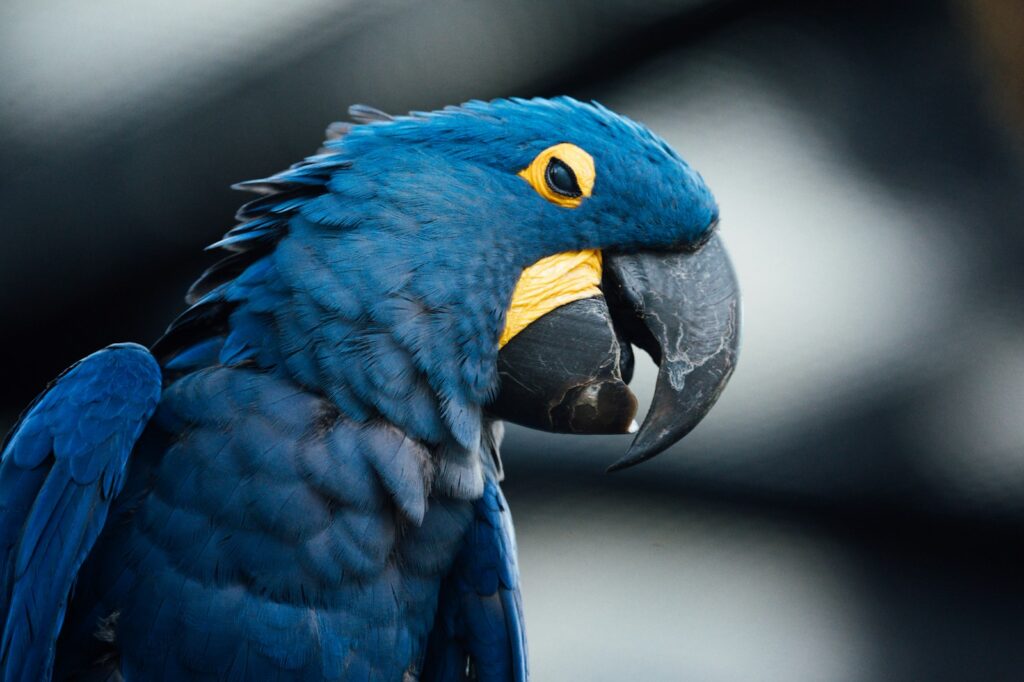
The Hyacinth Macaw is immediately recognizable by its stunning cobalt-blue feathers that shimmer in the sunlight, creating an almost iridescent effect that has captivated humans for centuries. Standing approximately 40 inches (100 cm) from head to tail and weighing around 3.7 pounds (1.7 kg), it holds the title of the largest flying parrot species in the world. Its powerful beak—a defining feature that can exert pressure of up to 200 pounds per square inch—is perfectly adapted for cracking the hardest palm nuts in its native habitat. Around the eyes and at the base of the lower mandible, you’ll notice distinctive yellow patches that dramatically contrast with the vivid blue plumage, adding to the bird’s striking appearance.
Natural Habitat and Distribution
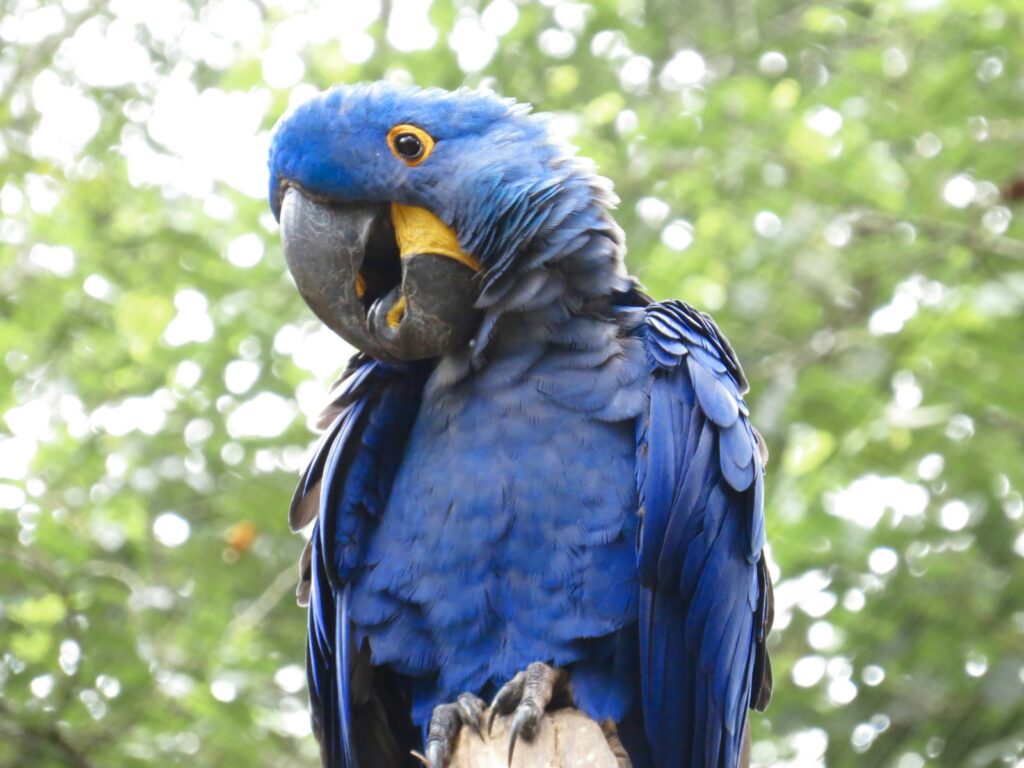
Hyacinth Macaws are native to central and eastern South America, with populations primarily concentrated in three regions: the Pantanal wetlands of Brazil, eastern Bolivia, and northeastern Paraguay. These birds show a marked preference for palm swamps, woodlands, and semi-open areas where palm trees provide both food and nesting opportunities. Unlike many rainforest birds, they actually prefer more open terrain with scattered trees rather than dense jungle habitats. The Pantanal region—the world’s largest tropical wetland area—serves as the last major stronghold for wild Hyacinth Macaw populations, where the birds can still be observed flying in pairs or small family groups across the landscape. Historically, these magnificent birds enjoyed a much wider distribution, but habitat destruction and illegal trapping have significantly reduced their range over the past century.
Diet and Feeding Habits in the Wild

Hyacinth Macaws have evolved a highly specialized diet centered around the nuts of specific palm trees, primarily the acuri and bocaiuva palms native to their habitat regions. Their immensely powerful beaks serve as the perfect tool for cracking these incredibly hard nuts that few other animals can access, giving them a unique ecological niche. Interestingly, they often feed on nuts that have already passed through the digestive systems of cattle, as this process softens the hard outer shell and makes the nutritious kernel more accessible. Beyond palm nuts, wild Hyacinths supplement their diet with other fruits, seeds, vegetation, and occasionally snails for additional protein and nutrients. Their feeding routine typically involves foraging in the early morning and late afternoon, often traveling considerable distances between feeding grounds and roosting sites in pairs or small groups.
Behavioral Traits and Intelligence

Hyacinth Macaws demonstrate remarkable intelligence comparable to that of a 3-4 year old human child, with problem-solving abilities that continue to impress researchers and caretakers alike. These birds are highly social, typically forming strong pair bonds that last a lifetime and traveling in small family groups or pairs rather than large flocks. Their communication skills are equally impressive, utilizing a complex vocabulary of calls, squawks, and more subtle vocalizations to convey different emotions and needs to their companions. One particularly endearing behavior is their playfulness—wild Hyacinths have been observed creating and using simple tools for play, hanging upside down from branches, and engaging in acrobatic flight patterns that appear to serve no purpose beyond enjoyment. Their emotional complexity extends to evident expressions of affection, jealousy, playfulness, and even apparent embarrassment, challenging our understanding of avian cognition.
Reproduction and Family Life
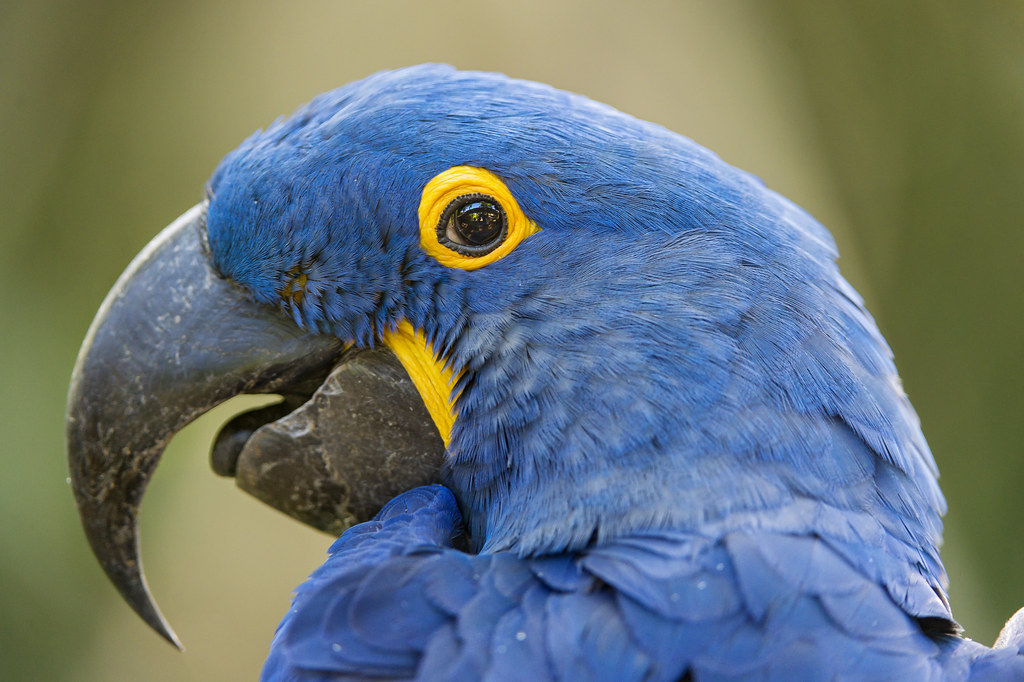
Hyacinth Macaws typically reach sexual maturity between 6-10 years of age, making them late bloomers compared to many bird species. Once mature, they form monogamous pair bonds that generally last for life, with partners engaging in mutual preening, food sharing, and coordinated vocalizations that strengthen their connection. Breeding usually occurs during the rainy season between November and April, when food resources are most abundant. Unlike many parrots that nest in tree cavities, Hyacinths often prefer nesting in cliff crevices or large cavities in manduvi trees, which they modify and maintain together. The female typically lays 1-2 eggs which are incubated for approximately 28 days, with parents taking turns warming the eggs and later feeding the chicks, which remain dependent on their parents for up to six months after hatching and may stay with the family unit for up to a year.
Conservation Status and Threats
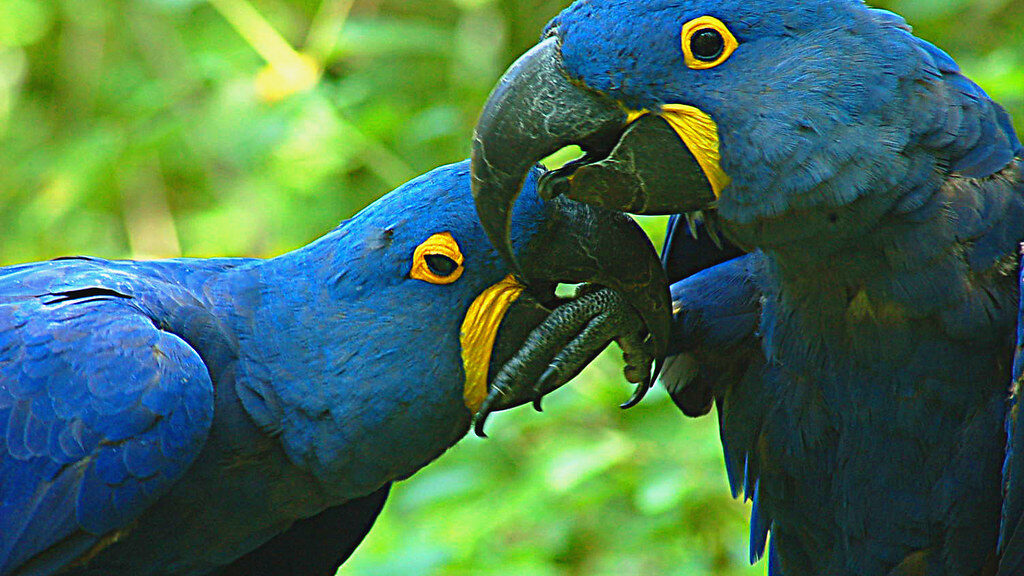
The Hyacinth Macaw is currently classified as “Vulnerable” on the IUCN Red List, though it has previously been listed as “Endangered” and remains one of the most threatened parrot species globally. Population estimates suggest fewer than 6,500 individuals remain in the wild, representing a dramatic decline from historical numbers. The primary threats facing these magnificent birds include habitat destruction from agricultural expansion, particularly for soybean cultivation and cattle ranching in the Pantanal region. The illegal wildlife trade continues to pose a significant threat, with Hyacinth Macaws fetching prices upwards of $10,000 on black markets, making them targets for poachers despite international trade restrictions. Additional challenges include the slow reproductive rate—with females laying only 1-2 eggs every 1-2 years—and competition for nesting sites with introduced honeybees and native toucans, factors that severely limit population recovery potential.
Conservation Efforts and Success Stories

Several dedicated conservation organizations have implemented crucial programs aimed at protecting remaining Hyacinth Macaw populations, with notable successes emerging in recent decades. The Hyacinth Macaw Project (Projeto Arara Azul), founded by Brazilian conservationist Neiva Guedes in 1987, has installed over 400 artificial nest boxes in the Pantanal region to compensate for the shortage of natural nesting cavities, significantly boosting reproductive success. Community education programs have successfully engaged local ranchers and farmers as conservation partners, with many now proudly protecting macaws on their properties instead of viewing them as pests. International trade regulations, particularly through CITES Appendix I listing, have helped reduce the pressure from illegal trafficking, though enforcement remains challenging in remote areas. These combined efforts have stabilized and slightly increased wild populations in some regions, offering hope that with continued protection, these magnificent birds might eventually recover.
Hyacinth Macaws as Pets: Important Considerations

While their beauty and intelligence make Hyacinth Macaws coveted pets, potential owners must understand the enormous responsibility these birds represent before considering ownership. With lifespans potentially exceeding 60 years in captivity, a Hyacinth Macaw represents a lifetime commitment that may outlive its original owner and require estate planning. The financial investment is substantial—beyond the initial purchase price (up to $40,000 for a responsibly bred bird), owners must provide specialized housing, toys that can withstand their powerful beaks, and ongoing veterinary care from avian specialists. Their size necessitates exceptionally spacious accommodations, with cages measuring at minimum 5’W × 6’L × 8’H and daily out-of-cage time in a bird-proofed environment. Perhaps most importantly, these highly intelligent and social creatures require several hours of daily interaction and mental stimulation to prevent destructive behaviors and psychological distress that commonly develop in neglected birds.
Dietary Requirements in Captivity
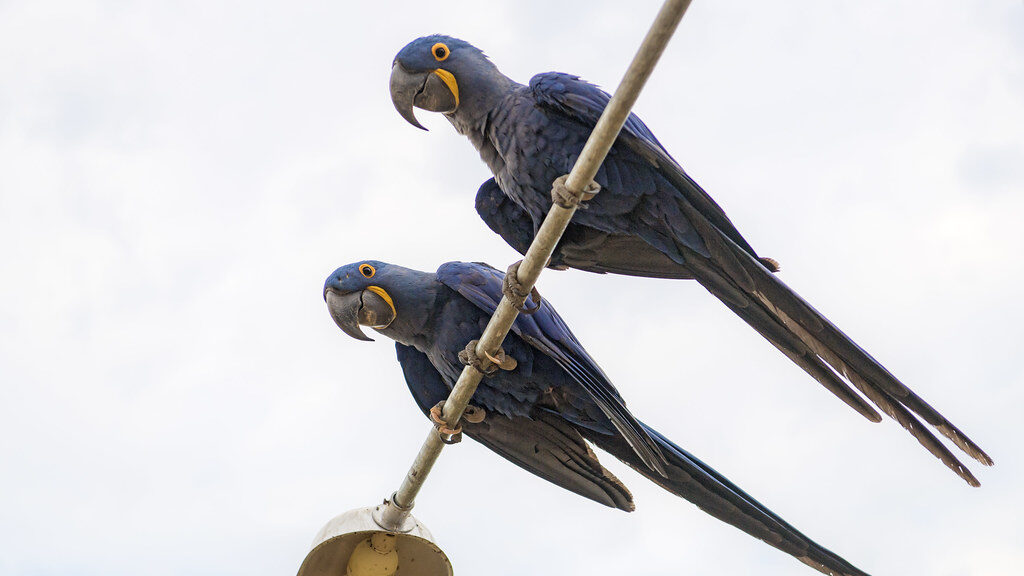
Properly feeding a captive Hyacinth Macaw requires careful attention to their specialized nutritional needs, which differ significantly from those of other parrot species. Their diet should center around specially formulated large macaw pellets that provide balanced nutrition, comprising approximately 50-60% of their daily food intake. Fresh nuts—particularly macadamias, Brazil nuts, walnuts, and almonds—are essential components that mimic their natural diet of palm nuts, though they should be offered in moderation due to their high fat content. Daily offerings of fresh fruits and vegetables should include dark leafy greens, bell peppers, carrots, and berries, with special attention to foods rich in vitamin A, which is crucial for their immune health. Unlike many other parrot species, Hyacinths have higher fat requirements, but this doesn’t mean unlimited nuts, as obesity remains a serious health concern in captivity where activity levels may be lower than in the wild.
Housing and Environmental Needs
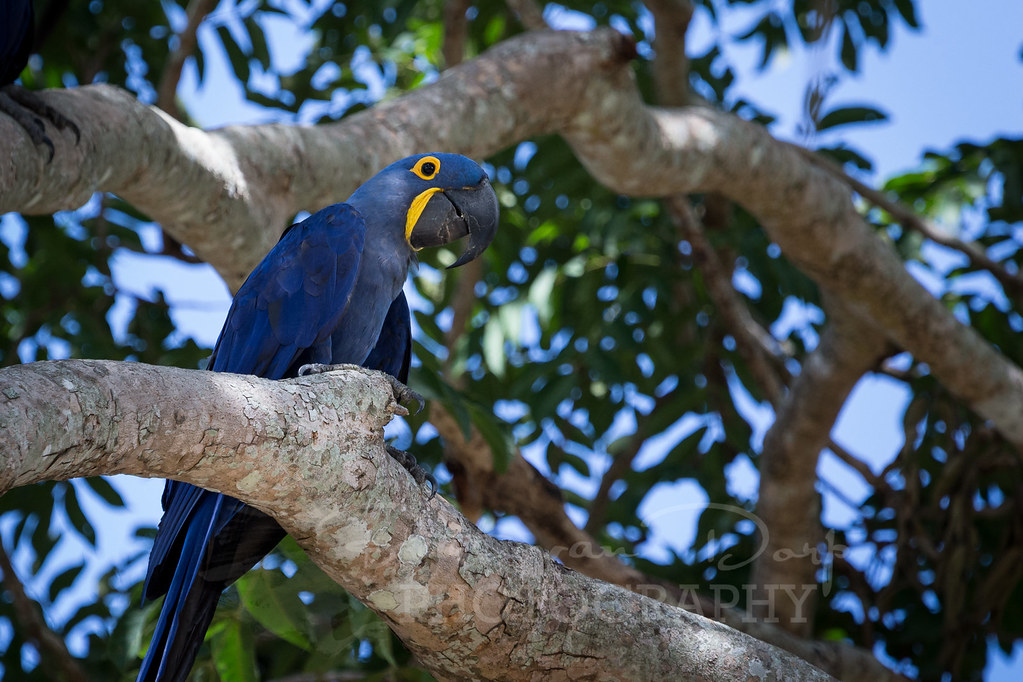
Creating an appropriate living environment for a Hyacinth Macaw requires significant space and thoughtful design to accommodate their large size and active nature. The cage must be constructed of heavy-duty materials—typically stainless steel with bars spaced 1-1.5 inches apart—as these powerful birds can easily bend or break standard cages designed for smaller parrots. Temperature regulation is important, with the environment ideally maintained between 65-85°F (18-29°C) with moderate humidity (50-70%) to support healthy skin and feather condition. Multiple perches of varying diameters (2-3 inches thick) made from untreated hardwood provide essential foot exercise and help prevent podiatric issues that commonly affect captive macaws. The cage should be positioned in a social area of the home where the bird can observe family activities, but with a portion backed against a wall to provide a sense of security and protection from potential drafts that could cause respiratory issues.
Health Concerns and Veterinary Care
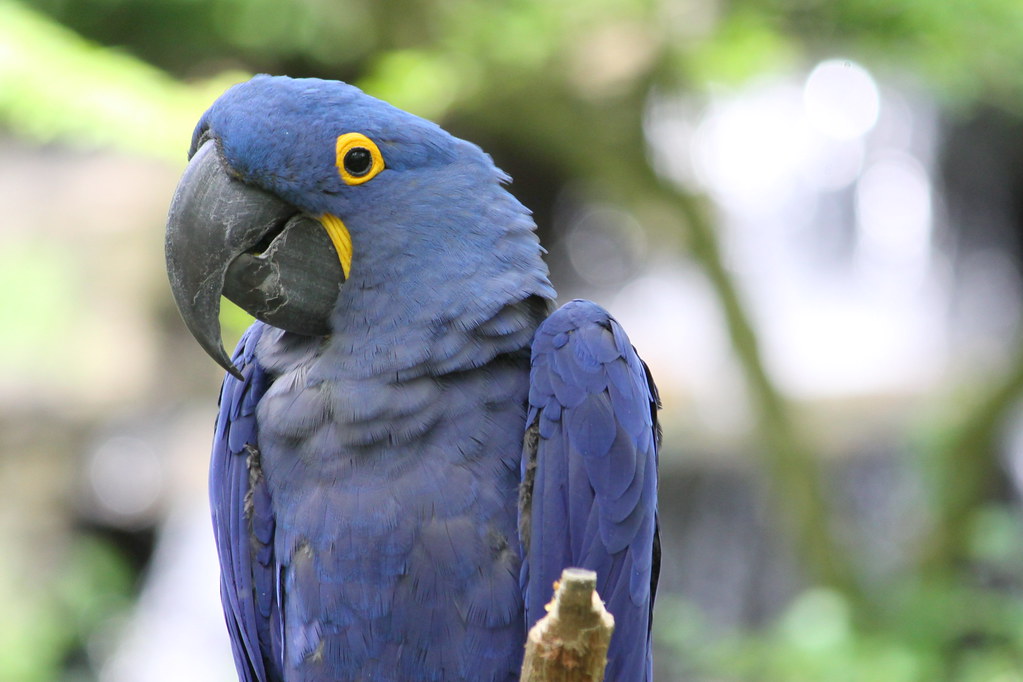
Hyacinth Macaws require specialized veterinary care from professionals experienced with large parrots, as their health needs differ significantly from more common pet birds. Regular check-ups, typically recommended every 6-12 months, should include blood work to monitor organ function, as these birds are prone to hemochromatosis (iron storage disease) when fed improper diets. Respiratory infections represent another common health concern, often resulting from exposure to drafts, cigarette smoke, or household cleaners with volatile compounds that damage their sensitive respiratory systems. Behavioral health is equally important, with owners needing to watch for signs of psychological distress such as feather plucking, excessive screaming, or self-mutilation, which frequently occur in birds lacking adequate mental stimulation or social interaction. Proactive preventive care, including regular nail and beak trimming by experienced professionals, helps avoid more serious complications and contributes to the bird’s overall wellbeing and longevity.
Training and Socialization Techniques

Successfully integrating a Hyacinth Macaw into a household requires consistent, patient training using positive reinforcement methods that build trust and cooperation. Training should begin with basic step-up commands, teaching the bird to willingly climb onto a perch or arm when requested, which forms the foundation for all subsequent training. Clicker training has proven particularly effective with these intelligent birds, allowing precise marking of desired behaviors that can then be shaped into more complex actions or tricks. Socialization should include gradual, positive exposure to different people, controlled environments, and everyday household activities to prevent the development of fears or phobic responses that can be difficult to reverse once established. Owners should remember that these birds respond extremely poorly to punishment or negative reinforcement, which typically results in damaged trust, increased aggression, or stress behaviors rather than improved conduct.
Legal Considerations and Ethical Ownership
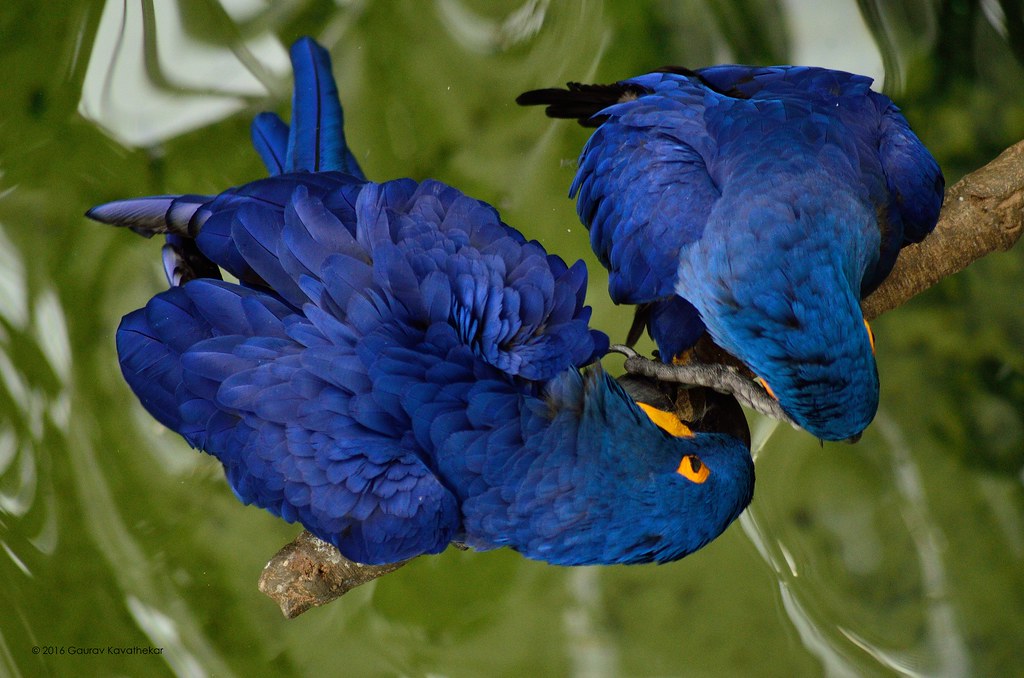
Prospective Hyacinth Macaw owners must navigate a complex landscape of legal requirements before bringing one of these rare birds home. In the United States, owners must obtain proper documentation proving the bird was legally bred in captivity, as wild-caught specimens are prohibited under the Convention on International Trade in Endangered Species (CITES) and the Wild Bird Conservation Act. Many states and municipalities have additional permitting requirements specifically for large parrots or endangered species, with some jurisdictions prohibiting private ownership entirely. Ethical considerations extend beyond legality, with responsible owners ensuring their birds come from reputable breeders who maintain genetically diverse breeding programs rather than contributing to the illegal wildlife trade. Current and prospective owners should also develop a comprehensive care plan for their bird’s entire lifespan, including provisions in their will or estate planning that address the macaw’s care should it outlive its owner—a frequent occurrence with these long-lived birds.
Cultural Significance and Historical Relationship with Humans

Throughout history, the striking blue Hyacinth Macaw has held significant cultural importance for indigenous peoples of South America, particularly among tribes of the Pantanal and Amazon regions. Various native groups incorporated the bird’s brilliant feathers into ceremonial headdresses and decorative items, with the Bororo people of Brazil considering the Hyacinth Macaw a sacred bird representing the sky spirit in their cosmology. European explorers first documented these magnificent birds in the late 18th century, with specimens quickly becoming prized additions to royal and aristocratic aviaries across Europe, establishing a pattern of collection that would eventually threaten wild populations. In modern times, the Hyacinth Macaw has become an important flagship species for conservation efforts in Brazil, featured on stamps, currency, and as a national symbol that raises awareness about the broader need to protect the unique ecosystems of the Pantanal region. Their intelligence and beauty continue to inspire artists, writers, and filmmakers, further cementing their place in human cultural consciousness and highlighting our complex relationship with these remarkable birds.
The Hyacinth Macaw stands as one of nature’s most magnificent creations—a bird whose striking beauty is matched only by its remarkable intelligence and complex emotional life. While these “gentle giants” of the parrot world face significant challenges in the wild, concerted conservation efforts offer hope for their future. For the fortunate few who responsibly keep Hyacinths as companions, they provide an unparalleled opportunity to form a deep bond with one of nature’s most extraordinary creatures. Whether observed soaring across the Pantanal wetlands or carefully interacting with their human caretakers, Hyacinth Macaws remind us of the incredible diversity of life on our planet and our responsibility to protect it for future generations.

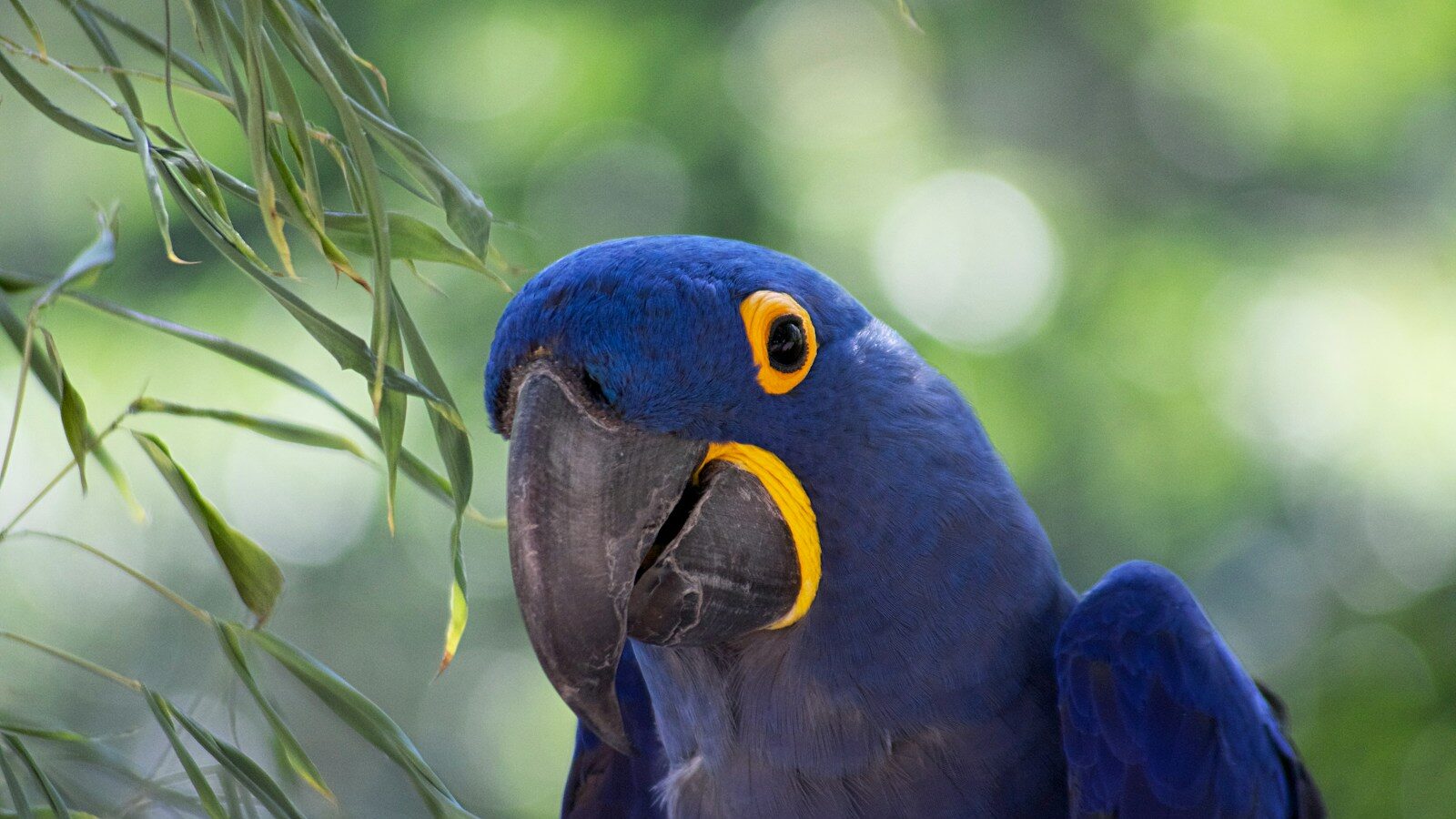
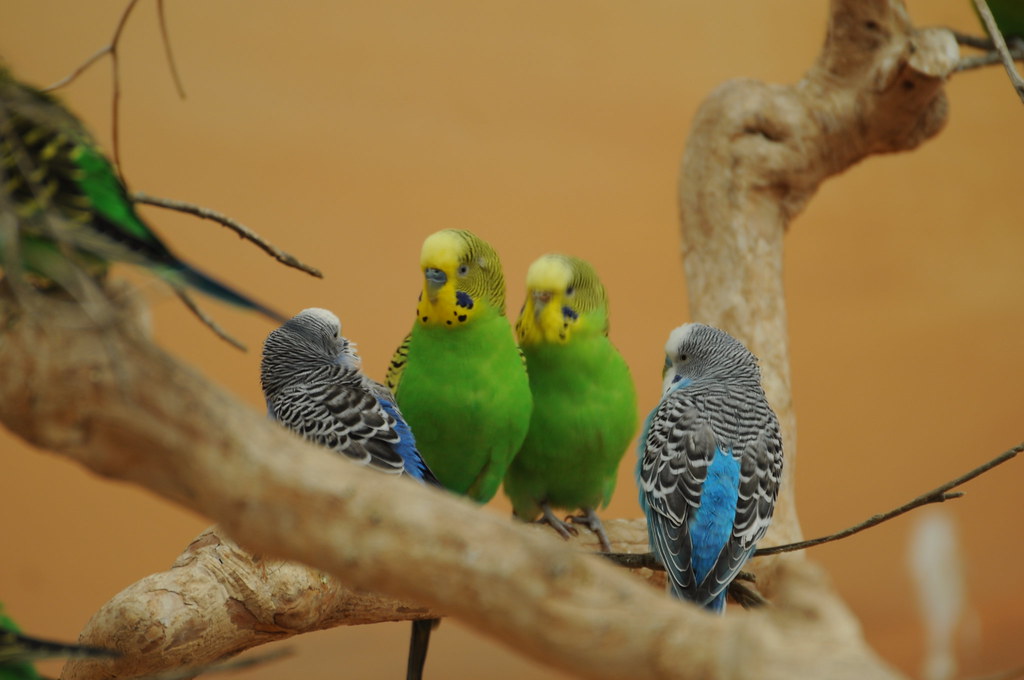
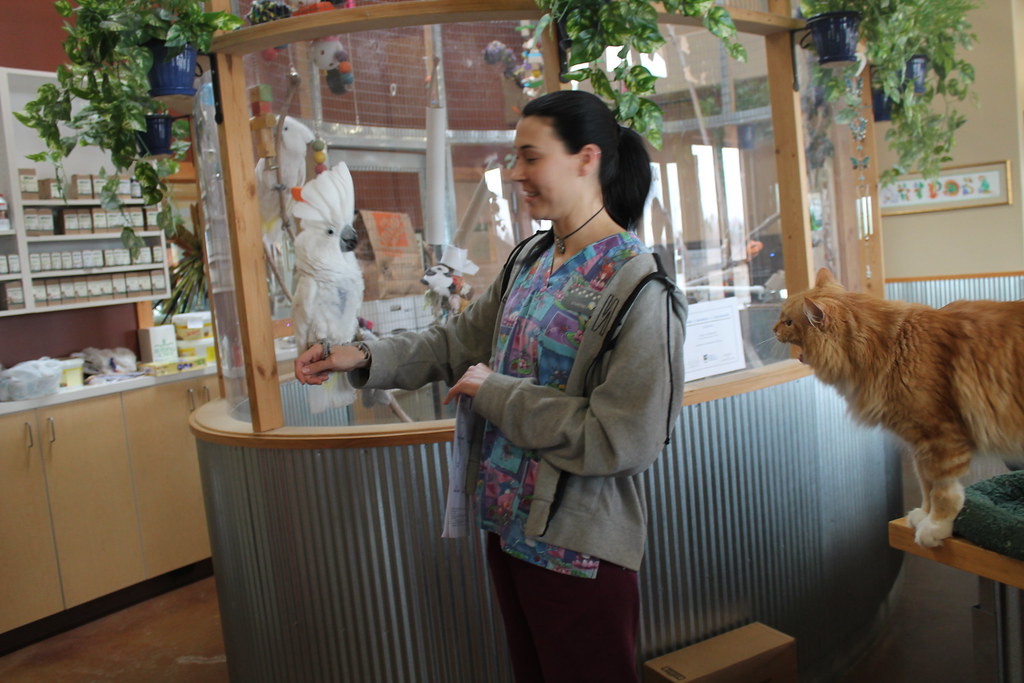
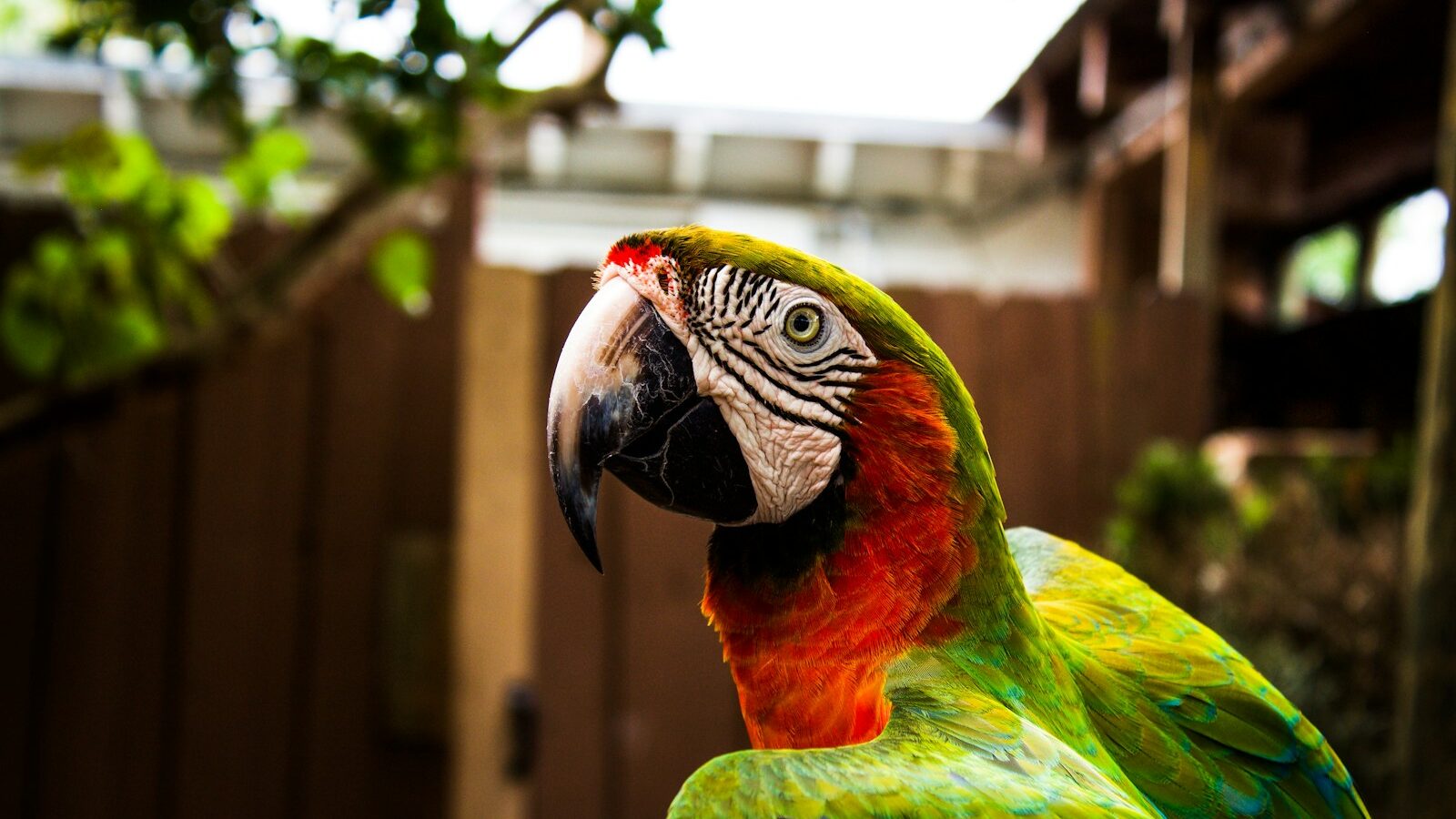
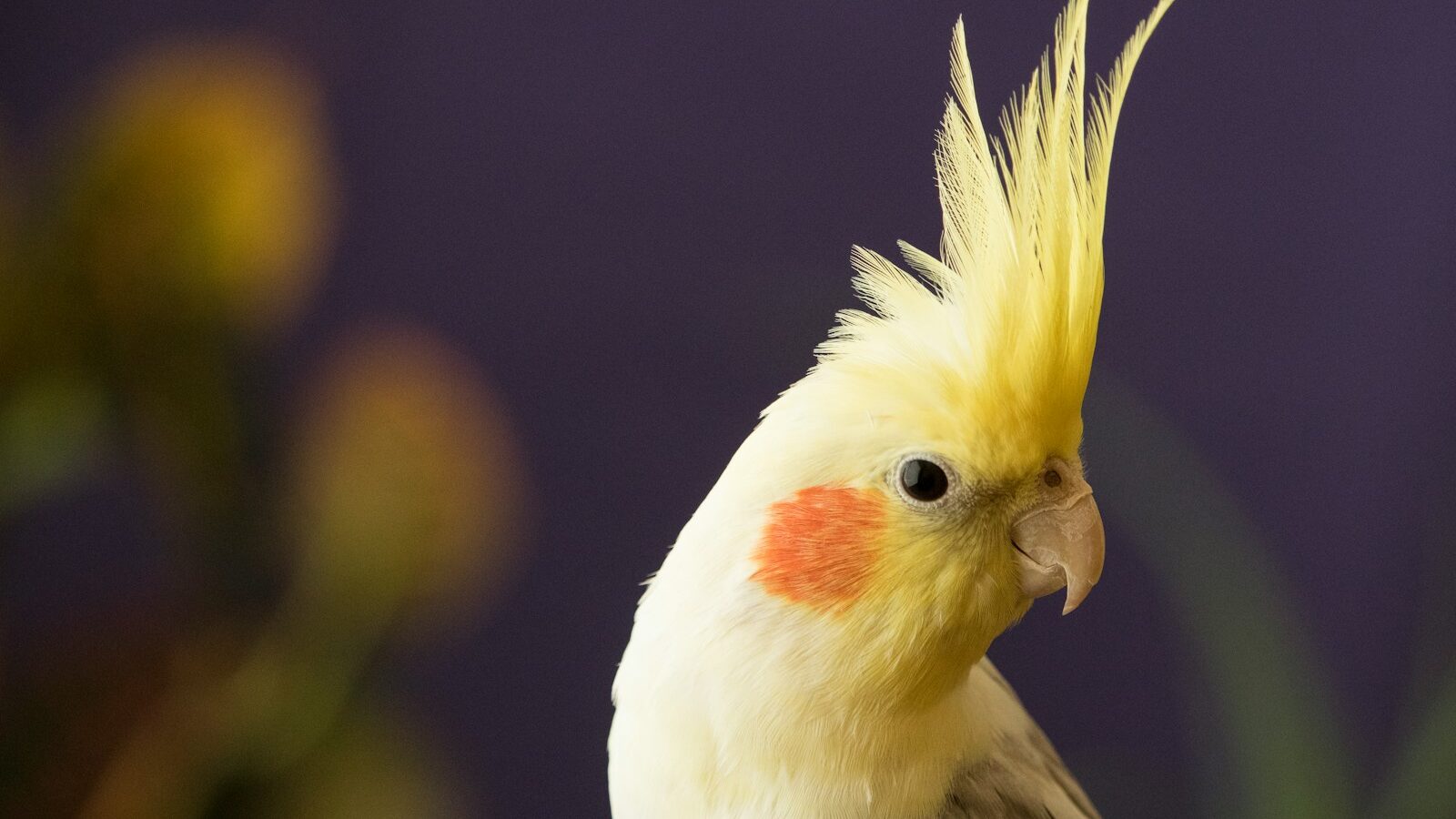

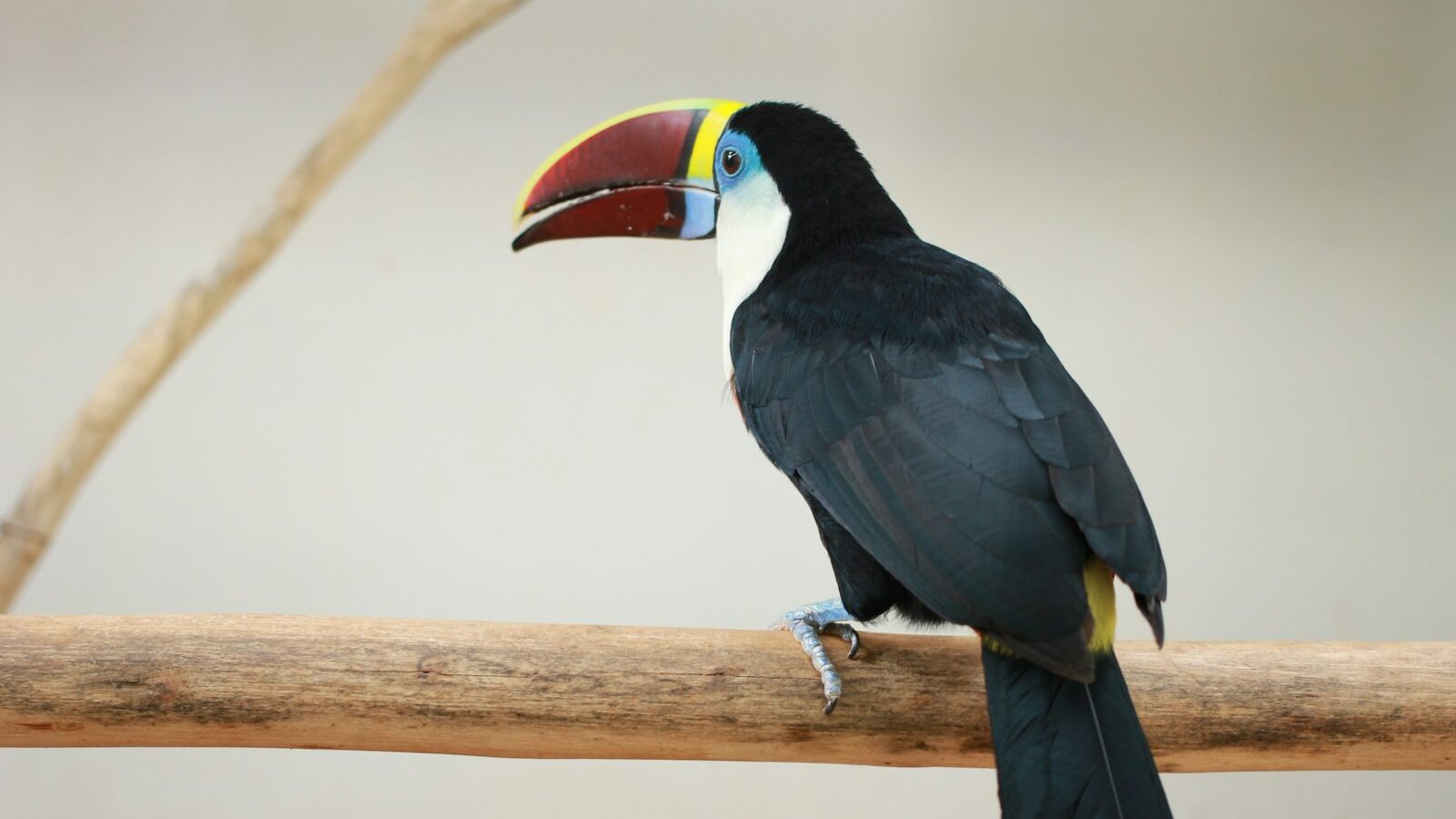

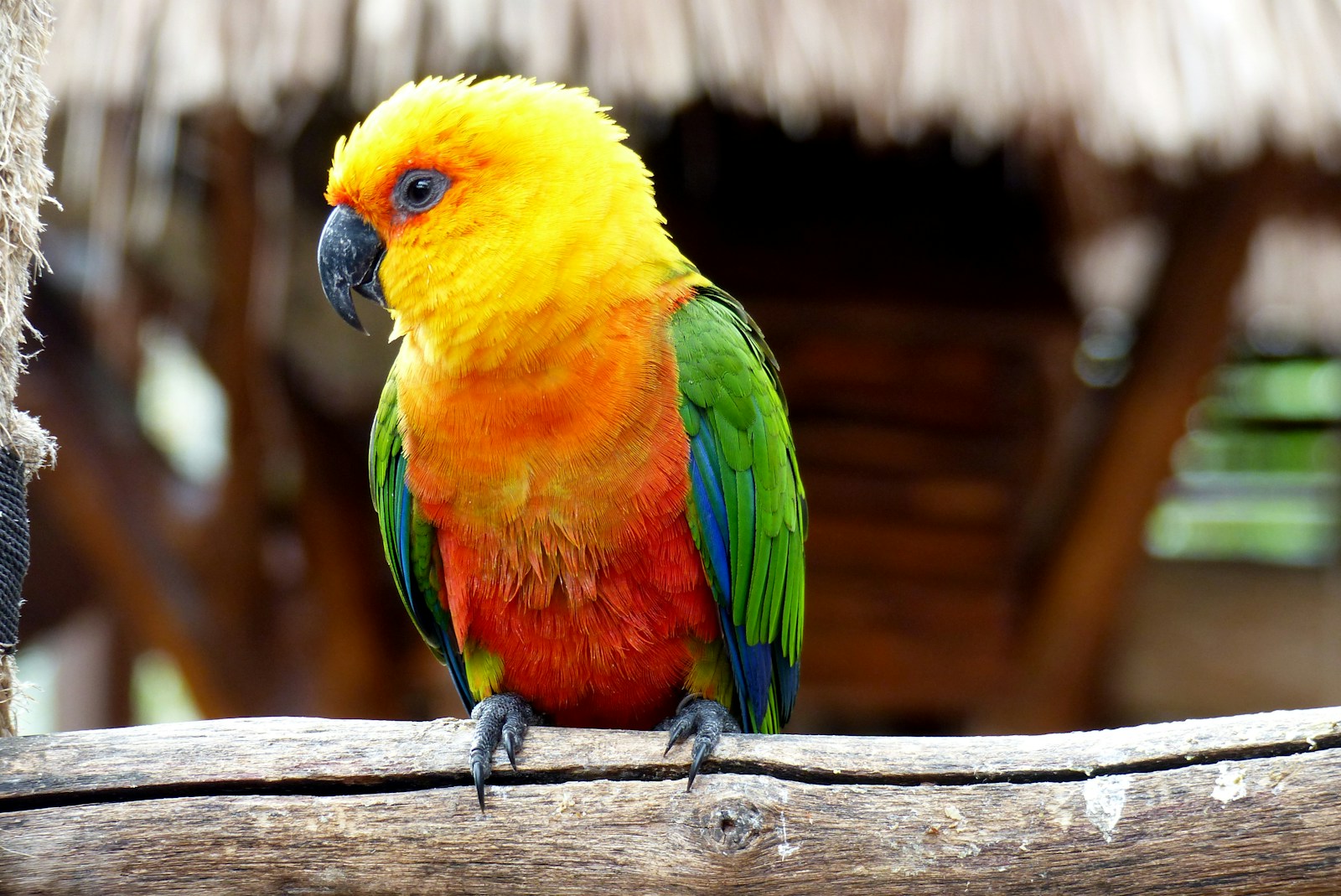
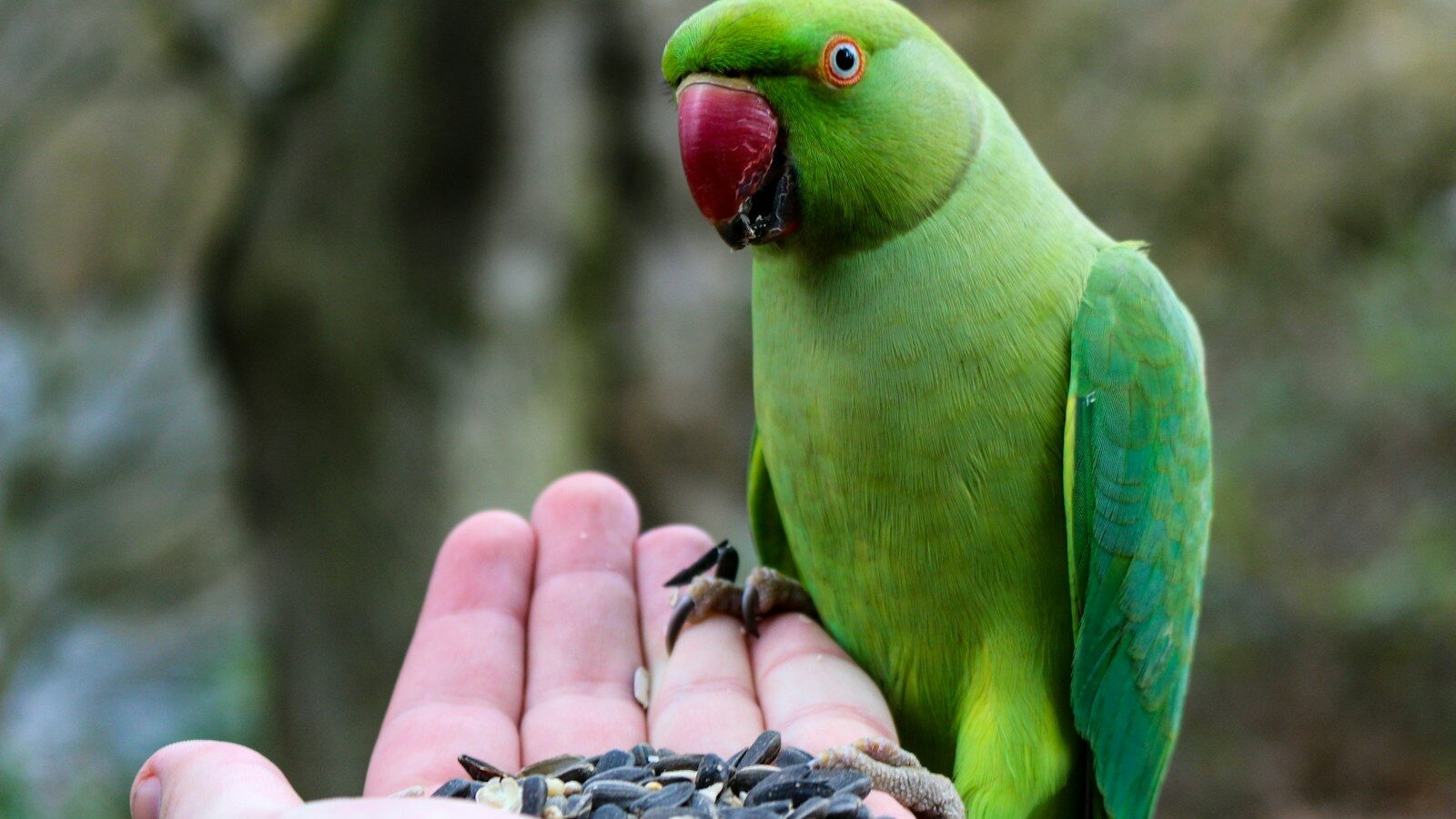
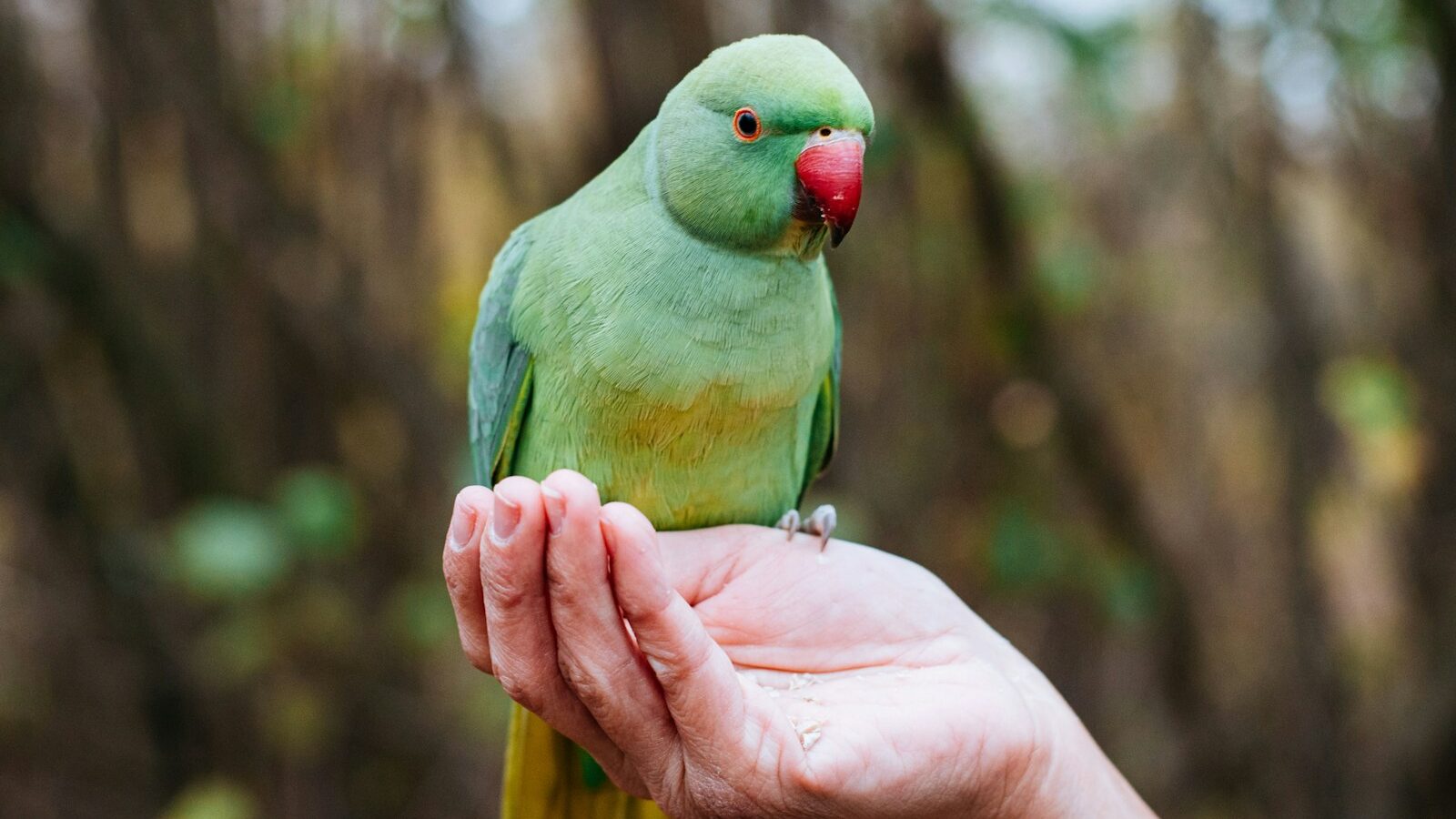

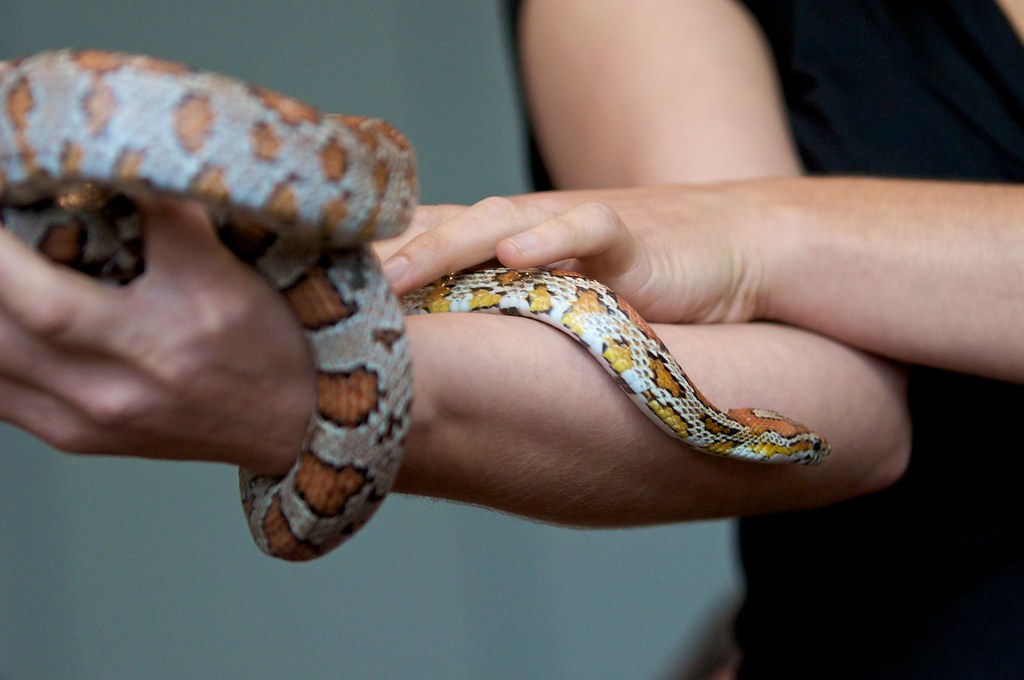

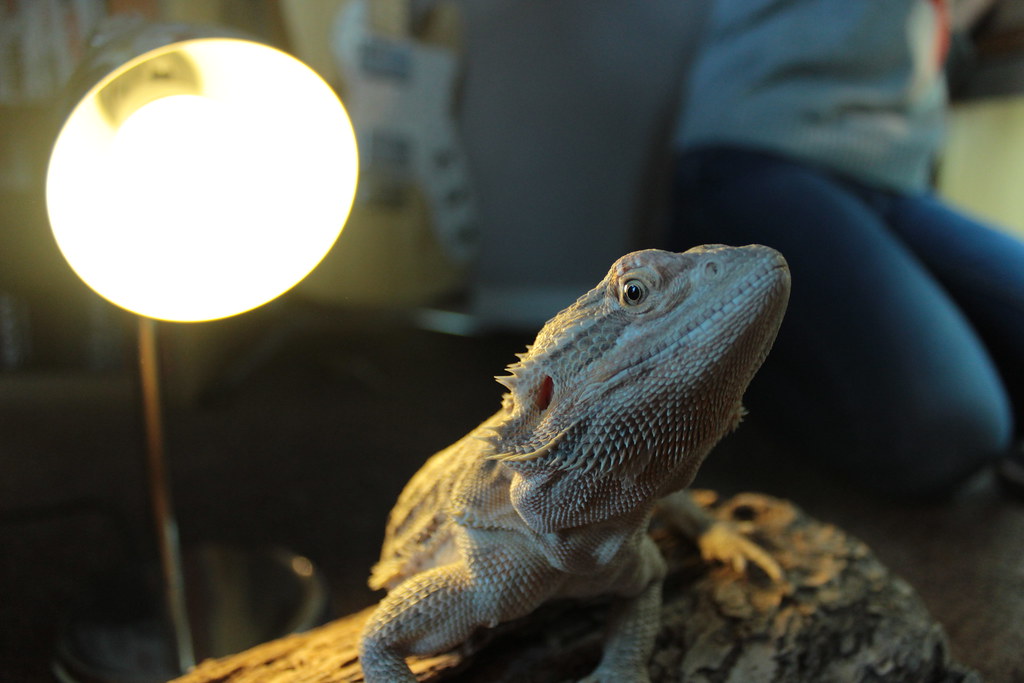
Leave a Reply